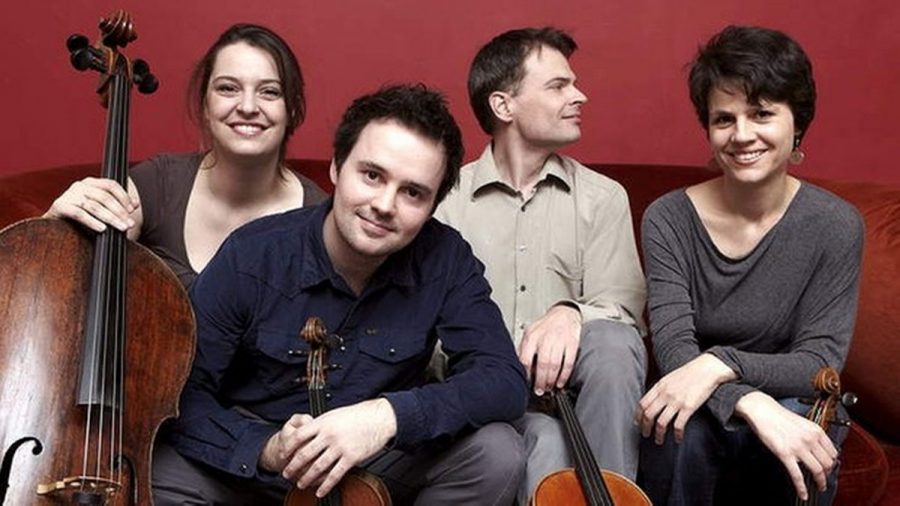Performed @ City Halls, Glasgow on Sun 28 Sep
Revelling in the gravelly warmth of the chords that instigate Beethoven’s Op. 127 – a gesturally bold but also fractured opening – the Elias String Quartet gets stuck straight into the heart of its strange, languorous drive. It’s a drive they evidently feel as one, shaping it together with finely nuanced care as it unfurls into sweet lyricism, and then motors forward with cheeky guile.
As the movement closes (with less bravado than normal), the players taper away the final melodic gesture with utmost tenderness, as if gently laying to rest a precious but incomplete thought. This makes way for the lengthy Adagio, with its beautifully extended and sometimes interwoven outer lines, that are delicately supported by responsive inner voices. Once again the ending is ambiguous, sounding more transitional than conclusive, and this time the Elias lets it go with an aching regret.
Snapping at the heels of such slippery calm comes a brusque Scherzando, with all caution tossed to the wind: the effect is exhilarating. Equally so is the mercurial Allegro, where the players prove their capacity to match sounds exactingly to aid bold textural contrasts. Steering unflinchingly from blocks of metallic whispers, to velvet softness, to galloping full-blooded brazenness, they accentuate the harmonic shifts that swerve disconcertingly in this whirlwind closing.
And yet the best is still to come; throughout the evening’s second chamber work – the even more chaotically original Op. 130 – the Elias display the type of maturity and assured guts that reveals their full investment in this repertoire. The Presto flies by with the light-footedness of some new, as yet unheard of, set of instruments. Evidently the curious assortment of movements will be probed to their expressive extremes, and this one is as breathily and nervily excitable as is possible. How a cello could possibly have been involved in this deftly skipping-tripping mania is almost beyond belief.
Most captivating of all is the Cavatina, the movement that is renowned to have brought even its own creator to tears. Its becalmed chordal textures are drawn out by the Elias with long but terse cantibile lines. The movement cuts back on registral extremes, and there is a new sparseness to the texture, with noticeable breaks in the upper voice and a shared lyricism that sometimes emanates, unusually, from within. These austere forces (that are so grandly expressive) are emphasised by the taught nature of this performance – none of the players indulge too heavily in virtuosic swells. Instead, melodic ebbs are subtle and roundly supported by the group’s sound: there is a most perfect and generous sharing of material. It’s unlikely that there exists any other music that so warmly consoles while it quietly devastates. This performance was both humane and profoundly sad.
